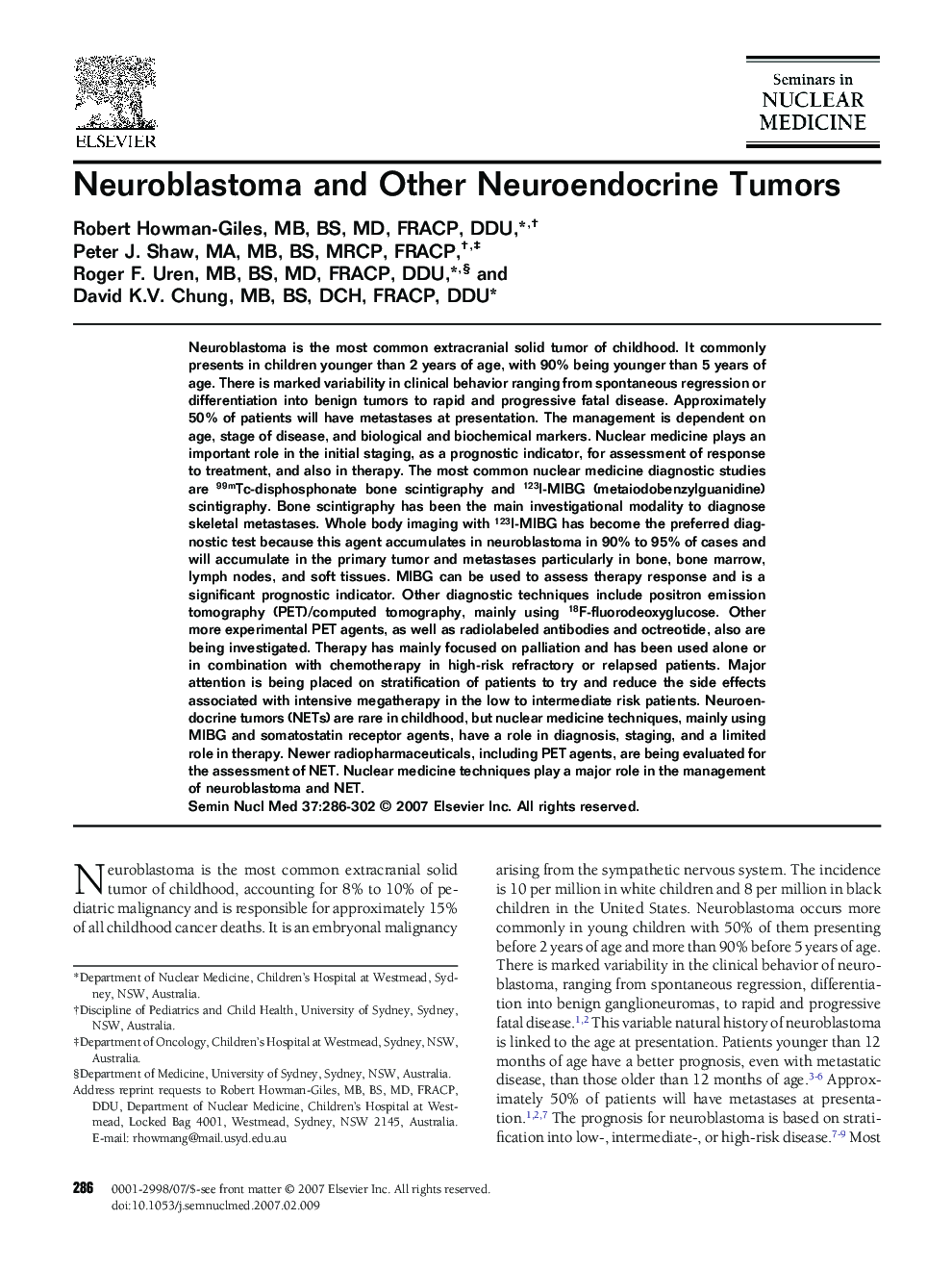| Article ID | Journal | Published Year | Pages | File Type |
|---|---|---|---|---|
| 4251255 | Seminars in Nuclear Medicine | 2007 | 17 Pages |
Neuroblastoma is the most common extracranial solid tumor of childhood. It commonly presents in children younger than 2 years of age, with 90% being younger than 5 years of age. There is marked variability in clinical behavior ranging from spontaneous regression or differentiation into benign tumors to rapid and progressive fatal disease. Approximately 50% of patients will have metastases at presentation. The management is dependent on age, stage of disease, and biological and biochemical markers. Nuclear medicine plays an important role in the initial staging, as a prognostic indicator, for assessment of response to treatment, and also in therapy. The most common nuclear medicine diagnostic studies are 99mTc-disphosphonate bone scintigraphy and 123I-MIBG (metaiodobenzylguanidine) scintigraphy. Bone scintigraphy has been the main investigational modality to diagnose skeletal metastases. Whole body imaging with 123I-MIBG has become the preferred diagnostic test because this agent accumulates in neuroblastoma in 90% to 95% of cases and will accumulate in the primary tumor and metastases particularly in bone, bone marrow, lymph nodes, and soft tissues. MIBG can be used to assess therapy response and is a significant prognostic indicator. Other diagnostic techniques include positron emission tomography (PET)/computed tomography, mainly using 18F-fluorodeoxyglucose. Other more experimental PET agents, as well as radiolabeled antibodies and octreotide, also are being investigated. Therapy has mainly focused on palliation and has been used alone or in combination with chemotherapy in high-risk refractory or relapsed patients. Major attention is being placed on stratification of patients to try and reduce the side effects associated with intensive megatherapy in the low to intermediate risk patients. Neuroendocrine tumors (NETs) are rare in childhood, but nuclear medicine techniques, mainly using MIBG and somatostatin receptor agents, have a role in diagnosis, staging, and a limited role in therapy. Newer radiopharmaceuticals, including PET agents, are being evaluated for the assessment of NET. Nuclear medicine techniques play a major role in the management of neuroblastoma and NET.
